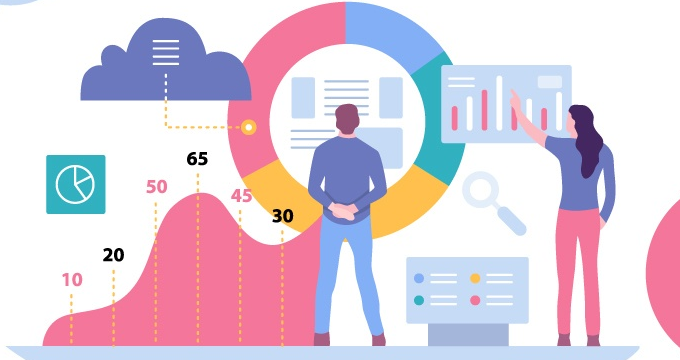In recent years, organizations across all industries have been increasingly becoming data-driven. Education is no exception: companies in both corporate and K12 education segments are leveraging student data to reach better learning outcomes. If you are wondering how learning analytics can account for better and more personalized education experience, read on.
What is Learning Analytics
The term Learning Analytics (LA) refers to using data about students’ interactions with educational environments in order to optimize the quality of teaching, learners’ performance, and their impact on the educational establishment or commercial organization.
To understand how learning analytics works, envision the student’s journey across both physical and digital environments where learning takes place. Today, any interaction with these environments leaves digital footprint: attending a class or a library, signing up for an online course, etc. On top of that, students’ performance records are also stored in the electronic format. By garnering insights from this data, educators can start offering students personalized learning experiences and much more.
As such, the process of analyzing data in education comprises data collection, measurement, and evaluation. Advanced data evaluation in learning analytics can deliver complex predictive analyses of trends in students’ performance and behavior.
All in all, existing learning analytics approaches can be subdivided into the three main categories:
Descriptive analytics
Using this type of learning analytics, educators can track student’s previous progress and make a conclusion about his/her knowledge and skills. Descriptive analytics are great for knowledge assessment and evaluating the skills gaps. Some learning management systems include illustrative analytics modules to help teachers with knowledge assessment.
Read Also: Choosing An E-Learning Platform: Ten Major Things To Consider
Predictive analytics
Predictive analytics process students’ historic and current data to make conclusions about their future behavior. This type of learning analytics helps teachers detect students who are at risk of failing a class or dropping out and enable the academic staff to intervene before it’s too late.
Prescriptive analytics
Prescriptive analytics not only provide teachers with insights about the student’s progress and behavior patterns but also offer suggestions about the tools teachers can use and actions they can take to help students achieve better performance.
Learning Analytics Benefits
So what does learning analytics bring to the table? In a nutshell, it provides educators with precise and highly relevant information about the success of their educational efforts and enables them to improve their results by making informed decisions.
More specifically, here’s what you can achieve by using learning analytics.
1. Improved teaching quality
No more guesswork – learning analytics help you indicate if the learning content you produce is assisting students to reach learning objectives. On top of that, they help assess teachers’ knowledge and skills and tell whether they need to upgrade. By monitoring student feedback during the course, educators can find out whether the course needs adjustments – for example, if the students are struggling or finding the course content too general or irrelevant.
2. Minimizing student churn rate
Improved retention rates naturally stem from improved teaching quality. Moreover, learning analytics help educators pinpoint exactly what forces students to drop their course. Also, student data insights help detect which students are experiencing difficulties and are at risk of dropping out. Thus, educators can take timely action by scheduling individual learning and counseling sessions to help them out.
3. Helping students learn proactively
Learning analytics enables students to track their progress and learn exactly which actions they should take to improve their performance. How am I progressing? How does my level of skills match my learning objectives? What are my knowledge gaps? Precise and timely answers to these questions can help students control their progress and avoid possible pitfalls.
Challenges to Learning Analytics Implementation
As much as educators would like to benefit from learning analytics, numerous obstacles hamper their implementation. Legacy systems, the quality of data, lack of buy-in on all organization levels are often standing in the way. There’s also the skills and expertise gap since implementing learning analytics requires working knowledge of fields like:
To succeed in implementing learning analytics, you have to envision your strategic objectives. Some learning management systems, such as VARTEQ’s ReaLMS, may include built-in analytics tools that will not only help you improve teaching and learning experience but also keep track of all of your current and upcoming expenses.
- Project management
- Data science
- Database development
- Analytics design and development
- Interface development and IT support
- Learning technologies administration, etc.
In some cases, though, you may need to build your own learning analytics system tailored to the unique needs of your organization. Partnering with an experienced tech partner, in this case, may help you build the custom learning analytics platform. Custom-built solutions have a number of benefits: you have full control over the development process and add features and tools that meet your needs best.
Read Also:6 Mistakes To Avoid When Launching Corporate E-learning Initiatives
Interested in building and implementing learning analytics systems? Contact our team now for a free consultation!

